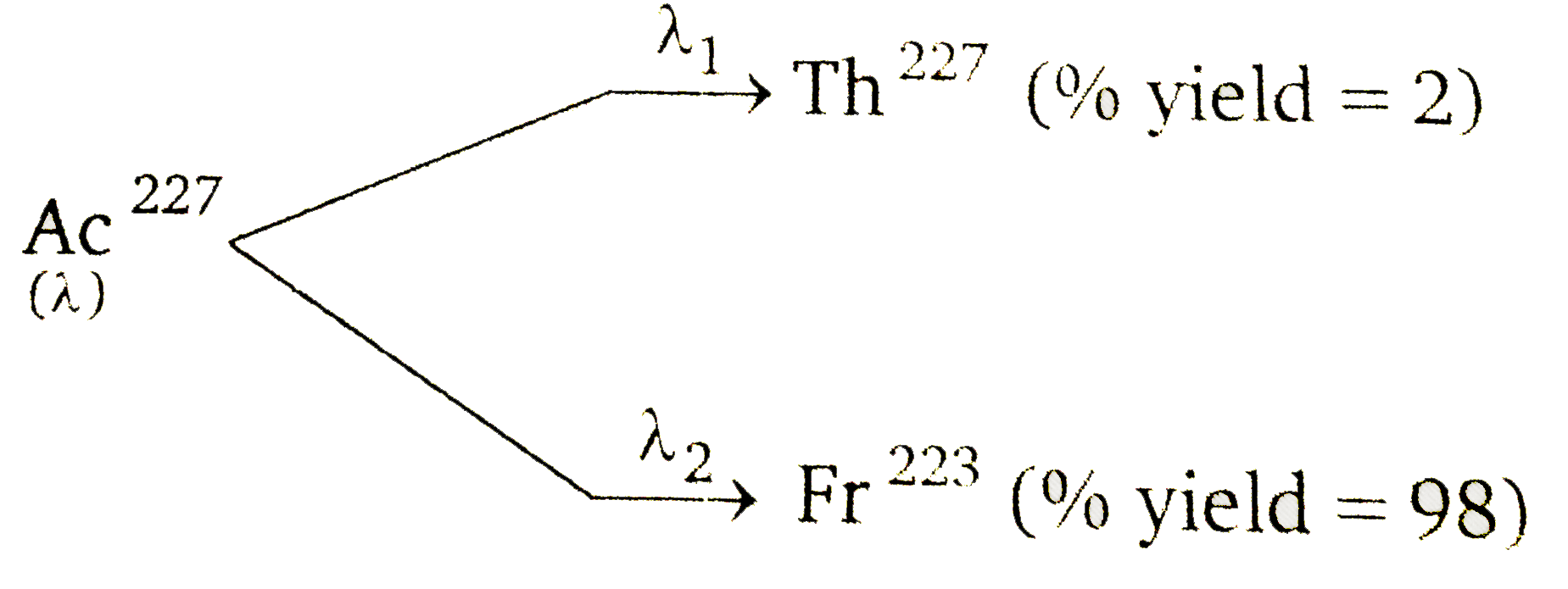Define decay constant
Step-by-Step Solution:
1. Understanding Decay: The decay of a radioactive substance refers to the process by which unstable nuclei lose energy by emitting radiation. This process occurs randomly over time.
2. Rate of Decay: The rate of decay of a radioactive substance is defined as the number of nuclei that decay per unit time. This rate is not constant; it depends on the number of undecayed nuclei present at any given moment.
3. Proportionality: The rate of decay is proportional to the number of undecayed nuclei (N) present at that instant. Mathematically, this can be expressed as:
Rate of decay=−kN
where k is the proportionality constant.
4. Decay Constant: The proportionality constant k is known as the decay constant. It quantifies the rate at which a particular radioactive substance decays. The negative sign indicates that the number of undecayed nuclei decreases over time.
5. Probability Interpretation: The decay constant can also be interpreted as the probability per unit time that a single nucleus will decay. This means that if k is larger, the likelihood of decay within a given time frame increases.
6. Relation to Half-Life: The decay constant is related to the half-life (T1/2) of the substance, which is the time required for half of the radioactive nuclei to decay. The relationship is given by:
k=ln(2)T1/2
This formula shows that the decay constant is inversely proportional to the half-life.
Final Definition:
The decay constant is defined as the probability per unit time that a nucleus will decay, and it determines the rate of decay of a radioactive substance. It can be mathematically expressed as k=ln(2)T1/2.
---
Rate of decay=−kN
where k is the proportionality constant.
k=ln(2)T1/2
This formula shows that the decay constant is inversely proportional to the half-life.
The decay constant is defined as the probability per unit time that a nucleus will decay, and it determines the rate of decay of a radioactive substance. It can be mathematically expressed as k=ln(2)T1/2.
Topper's Solved these Questions
- NUCLEAR PHYSICSBOOK - RESONANCE ENGLISHCHAPTER - NUCLEAR PHYSICSEXERCISE - Advanced level solutions
16 Videos
- NUCLEAR PHYSICSBOOK - RESONANCE ENGLISHCHAPTER - NUCLEAR PHYSICSEXERCISE - Exercise-3 Part-II JEE (MAIN)
19 Videos
- GRAVITATIONBOOK - RESONANCE ENGLISHCHAPTER - GRAVITATIONEXERCISE - HIGH LEVEL PROBLEMS
16 Videos
- REVISION DPPBOOK - RESONANCE ENGLISHCHAPTER - REVISION DPPEXERCISE - All Questions
463 Videos
Similar Questions
A certain radioactive material can undergo three constant λ,2λ and 3λ. Then, the effective decay constant λeff is equal to nλ. What is the value of n?
View SolutionAt time t=0N1 nuclei of decay constant λ1&N2 nuclei of decay constant λ2 are mixed. The decay rate of the mixture at time 't' is:
View SolutionThe half life of a radio nuclide is 77 days then its decay constant is
View SolutionObtain a relation between half life of a radioactive substance and decay constant (λ) .
View SolutionThe relationship between decay constant λ and half-life T of a radioactive substance is
View SolutionDefine rate constant (k) ?
View SolutionDefine solar constant.
View SolutionAc227 has a half-life of 22 years . The decays follows two parallel paths

What are the decay constant (λ) for Th and Fr respectively ?
View SolutionA free neutron beta-decays to a proton weth a half-life of 14 minutes .(a)What is the decay constant ?(b)Find the energy liberated in the process.
View SolutionWhat is the value of decay constant of a compound having half life time of 2.95 days?
View Solution
